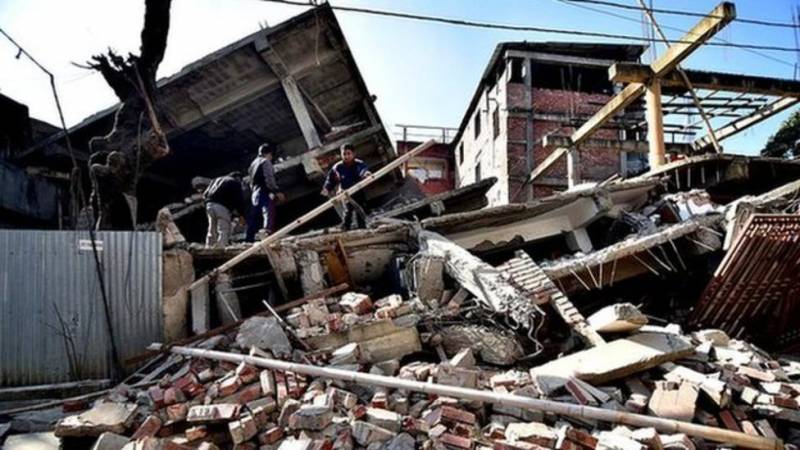IIITH Researchers collate earthquake risk index for NDMA; only seven, out of 50 cities, have low risk
By Anusha Puppala
Highlights
- Index based on pilot study of 50 selected Indian cities located in seismically active regions
- The report might help appropriate decision-makers and town planners in prioritising disaster preparedness in vulnerable cities
- Risk has been categorised as Low, Medium and High
Hyderabad: The International Institute of Information Technology, Hyderabad (IIITH) has collaborated with the National Disaster Management Authority (NDMA) to develop an Earthquake Disaster Risk Index (EDRI) for cities. Researchers at IIITH have been working on assessing the risk of earthquakes on buildings at the Earthquake Engineering Research Centre (EERC) since 2006.
Professor Pradeep Ramancharla, EERC, says, “About 56 per cent of Indian land is prone to moderate to severe earthquakes. Unfortunately, about 82 per cent of our population is living on this land. So, technically, four out of five people are under earthquake threat.”
Increasing general awareness among the public about earthquake safety and making homes earthquake-resilient were a few of the group’s aim. While one way deals with educating architects and engineers in putting in place an adequate framework for new buildings, another manner is to determine the risk of existing buildings and to suggest techniques for reinforcing the same.
IIITH team has created a risk assessment index over 13 years that spanned three projects in different states and cities. The risk assessment index comprises of three components, namely earthquake hazard, exposure and vulnerability of a city.
15 cities were selected from seismic zone V, 28 cities from seismic zone IV, and the remaining seven were from metro cities.
“Earthquake hazard refers to the amount of ground shaking that an area will experience. Exposure refers to the number of buildings present in that area, and vulnerability refers to the strength of the building to withstand an earthquake,” explains Ramancharla. The researchers’ efforts lay in reducing vulnerability. “Hazard is governed by nature, while town planning and local government bodies influence exposure. So our focus was on vulnerability which is in the hands of architects and engineers,” he adds.
The team also recorded vibration data on selected buildings, while using a combination of physical surveys on ground and risk assessment. To simulate the effects of earthquakes of varying intensities, the data was fed into a computer model. Physical damage to buildings during earthquakes could be quantified this way.
The risk, which is initially estimated of individual building typology in a city, is eventually projected onto the town using the census data of the total number of buildings in that city of that typology.
A pilot study was conducted by the NDMA where the cities were selected based on the population density, housing threat factor and the cities identified by the government to develop as Smart Cities. The primary area of focus was the seismically active regions in India, i.e. seismic zones IV and V and 50 cities were selected. Among which, 15 cities were chosen from seismic zone V, 28 towns from seismic zone IV, and the remaining seven were metro cities. The risk was estimated for these selected cities in the form of low, medium and high risk.
Only seven cities have low-level risk, whereas 30 cities have medium-level risk and 13 cities have high-level risk among the 50 cities, shows the Earthquake Disaster Risk Index (EDRI).
No city has a low hazard level, as cities were selected from the higher seismic zones, the study revealed. Cities with hilly terrain have little exposure, whereas cities with flat terrain and high populations have high exposure. The vulnerability of each city depends only on the construction typology adopted. Hence, of the 50 cities, the vulnerability of the built environment is low in only five cities, medium in 36 towns and high for nine cities. Only seven cities have low-level risk, whereas 30 cities have medium level risk, and 13 cities have high-level risk among the 50 cities, shows the Earthquake Disaster Risk Index (EDRI).
While admitting that the EDRI is based on results of a pilot study involving selected cities, Ramancharla suggests a detailed structural evaluation of vulnerable buildings so that suitable riders can be put in place on developmental activities along with retrofitting measures adopted by policymakers. “The EDRI will help increase significant awareness among the people residing in highly seismic vulnerable areas,” says he.
The main idea of researchers is to achieve this by not only conducting awareness programmes and establishment of demonstration retrofitting units but also engaging with locals so that they can identify vulnerable hazardous buildings and can plan for quick repair and restoration.